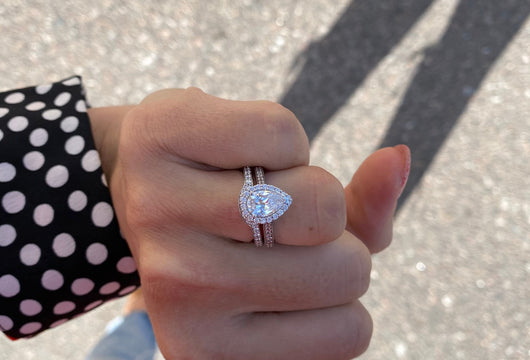
Lab-Grown Diamonds vs. Mined Diamonds: Understanding the Differences
In recent years, the jewelry industry has seen a growing interest in lab-grown diamonds, especially as consumers become more conscious about sustainability and ethical sourcing. Lab-grown diamonds are emerging as an alternative to traditionally mined diamonds, but what exactly are they, and how do they compare to natural diamonds? This article explores the differences, benefits, and considerations between lab-grown diamonds and mined diamonds.
What are Lab-Grown Diamonds?
Lab grown diamonds or mined, also known as synthetic, man-made, or cultured diamonds, are real diamonds created in laboratories rather than forming over millions of years inside the Earth. These diamonds are chemically, physically, and optically identical to mined diamonds. The two primary methods used to create lab-grown diamonds are High Pressure High Temperature (HPHT) and Chemical Vapor Deposition (CVD).
- HPHT: This method mimics the natural conditions of the Earth’s mantle by applying high pressure and temperature to carbon, which helps diamonds form around a small seed.
- CVD: In this process, a mixture of gases is introduced into a vacuum chamber, where the gases break down and deposit carbon atoms onto a surface, allowing the diamond to grow.
The ability to create diamonds in a controlled environment means that lab-grown diamonds can be produced much faster than mined diamonds, often within weeks or months.
What Are Mined Diamonds?
Mined diamonds are natural diamonds formed deep within the Earth’s mantle under intense heat and pressure. These diamonds are extracted through mining methods such as open-pit or underground mining, often from kimberlite pipes (volcanic tubes). Once extracted, rough diamonds are sorted, cut, and polished into gemstones.
Mined diamonds have been the traditional choice for jewelry, symbolizing luxury and rarity. However, concerns about the environmental and social impact of diamond mining are growing.
Differences Between Lab-Grown and Mined Diamonds
Lab-grown diamonds are created in labs, where the production process has a far lower environmental impact compared to diamond mining. Mining for diamonds involves land disruption, water usage, and carbon emissions, which contribute significantly to environmental degradation. Lab-grown diamonds, on the other hand, require less energy, don’t contribute to habitat destruction, and leave a smaller carbon footprint.
Lab-grown diamonds are typically more affordable than mined diamonds. The manufacturing process is less expensive because it does not involve the complexities and costs associated with extracting and transporting diamonds from the Earth. Mined diamonds are more costly due to the labor-intensive mining process and the rarity of high-quality stones.
Both lab-grown and mined diamonds are identical in terms of chemical composition, structure, and appearance. They are graded based on the same criteria—cut, color, clarity, and carat weight. Lab-grown diamonds can often be of higher clarity due to controlled growing conditions, while mined diamonds may have unique inclusions that can add to their character and value.
One of the major draws of lab-grown diamonds is their ethical advantage. They are free from concerns related to “blood diamonds,” which are diamonds mined in war zones and sold to fund conflict. The labor used in producing lab-grown diamonds is typically much more transparent and controlled. In contrast, diamond mining can sometimes involve human rights abuses, poor labor conditions, and environmental destruction, despite efforts like the Kimberley Process aimed at reducing conflict diamonds.
Mined diamonds generally hold better resale value due to their rarity and long-standing association with prestige and tradition. Lab-grown diamonds, while becoming more popular, tend to have a lower resale value because they are not as scarce. However, as the market for lab-grown diamonds grows, the future resale market may change.
Consumer Perception and Market Trends
Although lab created diamonds have been gaining popularity, many consumers still prefer mined diamonds due to their historical significance, rarity, and the emotional connection associated with owning a diamond that has been naturally formed over millions of years. However, younger generations, who are more focused on sustainability and ethical consumption, are increasingly drawn to lab-grown diamonds.
As technology improves and the availability of lab-grown diamonds expands, they are likely to become an even more attractive option for consumers seeking a more affordable and sustainable alternative to traditional mined diamonds. Furthermore, as societal values continue to evolve, the demand for ethically sourced products is expected to rise, pushing the diamond industry towards more sustainable practices.
Conclusion
Both lab-grown and mined diamonds have their own distinct advantages, and the choice between the two depends on individual preferences, values, and budget. Lab-grown diamonds offer a more ethical and affordable option, appealing to consumers who prioritize sustainability and cost-effectiveness. Mined diamonds continue to symbolize rarity and tradition, maintaining their status as a luxury item. The growing acceptance of lab-grown diamonds and the increasing focus on sustainability may shape the future of the diamond industry, offering consumers a broader range of choices when it comes to purchasing a diamond.
